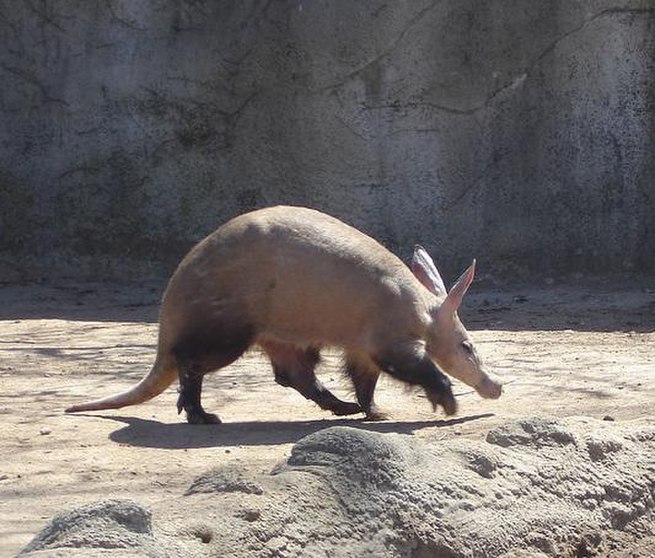Main Difference
The main difference between Aardvark and Armadillo is that the Aardvark is a species of mammal and Armadillo is a family of mammals
-
Aardvark
The aardvark ( ARD-vark; Orycteropus afer) is a medium-sized, burrowing, nocturnal mammal native to Africa. It is the only living species of the order Tubulidentata, although other prehistoric species and genera of Tubulidentata are known. Unlike other insectivores, it has a long pig-like snout, which is used to sniff out food. It roams over most of the southern two-thirds of the African continent, avoiding areas that are mainly rocky. A nocturnal feeder, it subsists on ants and termites, which it will dig out of their hills using its sharp claws and powerful legs. It also digs to create burrows in which to live and rear its young. It receives a “least concern” rating from the IUCN, although its numbers seem to be decreasing.
-
Armadillo
Armadillos are New World placental mammals in the order Cingulata with a leathery armour shell. The Chlamyphoridae and Dasypodidae are the only surviving families in the order, which is part of the superorder Xenarthra, along with the anteaters and sloths. The word armadillo means “little armoured one” in Spanish. The Aztecs called them āyōtōchtli [aːjoːˈtoːt͡ʃt͡ɬi], Nahuatl for “turtle-rabbit”: āyōtl [ˈaːjoːt͡ɬ] (turtle) and tōchtli [ˈtoːt͡ʃt͡ɬi] (rabbit). The Portuguese word for “armadillo” is tatu which derives from the Tupi language. Similar names are also found in other, especially European, languages.
About nine extant genera and 21 extant species of armadillo have been described, some of which are distinguished by the number of bands on their armour. Their average length is about 75 cm (30 in), including tail. The giant armadillo grows up to 150 cm (59 in) and weighs up to 54 kg (119 lb), while the pink fairy armadillo is a diminutive species, with an overall length of 13–15 cm (5–6 in). All species are native to the Americas, where they inhabit a variety of different environments.
Recent genetic research suggests that an extinct group of giant armoured mammals, the glyptodonts, should be included within the lineage of armadillos, having diverged some 35 million years ago, much more recently than previously assumed.
-
Aardvark (noun)
The nocturnal, insectivorous, burrowing, mammal Orycteropus afer, of the order Tubulidentata, somewhat resembling a pig, common in some parts of sub-Saharan Africa. First attested in the late 18th c.
“The aardvark burrows in the ground and feeds mostly on termites, which it catches with its long, slimy tongue.”
-
Aardvark (noun)
A silly or credulous person who is prone to mistakes or blunders.
“I walked into the wrong bathroom like a total aardvark.”
-
Armadillo (noun)
Any of the burrowing mammals covered with bony, jointed, protective plates, order Cingulata, found in the Americas, especially in South America.
-
Aardvark (noun)
a nocturnal badger-sized burrowing mammal of Africa, with long ears, a tubular snout, and a long extensible tongue, feeding on ants and termites.
-
Armadillo (noun)
a nocturnal insectivorous mammal that has large claws for digging and a body covered in bony plates. Armadillos are native to Central and South America and one kind is spreading into the southern US.

